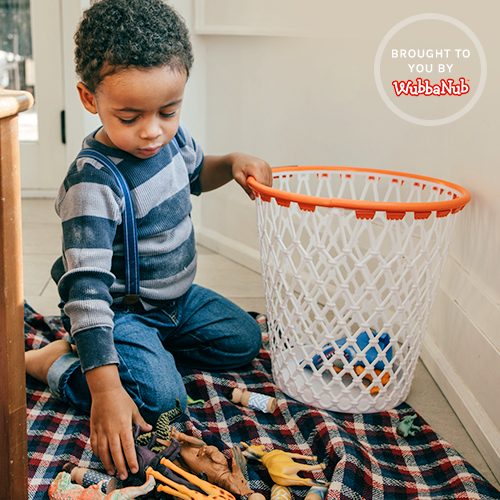Not to be too corny but I love the “Spoonful of Sugar” approach to involving kids with household chores. Adults are different when it comes to cleanliness. I can be a bit messy but I love to do a good deep clean of the house, one of those weirdos who finds it super relaxing to spend hours cleaning my home from top to bottom, usually while listening to The Spice Girls (I will not be judged). But when it comes to getting your kids to help out, the biggest thing is really about the importance of participation. Giving them a task to be responsible for and encouraging them to see it through will give them a feeling of pride, and help you around the house!
Start Small
One game that works especially well with young children is “Where Does This Go?” it’s easy, effective, and helps develop their sense of call-and-response repetitive play. This is a good way to start giving your kids small responsibilities without it seeming like a chore.
When it’s time to pack away the toys for the day simply pick one up and ask “where does this one go?”, usually, children will quickly find a spot for the toy but if they’re reluctant you can give them a small nudge by suggesting a place for the toy to go. Try to keep this in the form of a question “Does it go here?” which will give your child agency in making the decision. Do this a few times with a call and response and typically children will pick up on the pattern and start moving toys on their own, usually repeating the phrase.
The first few times you play, the goal is really just to establish this as a game. Don’t focus too much on where the toys are being placed. Turn-taking is an important way to assist with language development and helps your kids transition from being naturally egocentric to experiencing the world outwardly.
Once you have established the game it will be easier to get your kids excited about and to add to it as their language development advances. Instead of only asking “where does this go?” include simple modifiers and options, “does this go on the shelf? Or does this go in the drawer?”. It may take a little bit longer to get everything put away, but it will give your child ownership over their space as well as providing you with some extra quality time.
Dressing The Part
As adults, we know the power of a costume change. Whether you’re going from a day look to night or getting in your comfies when you get home, there’s value in changing what you’re wearing to help you mentally transition to a different phase of your day. The same is true for children. Sure, when it’s time to get the house cleaned up they’re unlikely to throw on their sweats and worn out t-shirts but creating a “cleaning costume” will help reinforce the sense of play and to signal the days’ transition.
You can get as elaborate with this as you want. Making special t-shirts that your kids wear only during cleaning time or fashioning newspaper hat that they can paint to express their creativity and give them ownership of the project. I personally love the idea of badges. They’re small and easy to make, and get the same point across that the activity has begun and they are playing along.
The idea of dressing up is not just about what everyone is wearing, it’s about creating an environment. If you think of cleaning like a game then your family is a team, and everything in your home can be considered part of it. Tasks are like playing a position. This is another great moment to give your kids a few options. “Do you want to be the Duster? Or do you want to be the Kitchen Cleaner?”. You don’t need to go overboard with options, just one or two so that your child or children can participate and set up goals.
Setting Goals
This is a pretty familiar one to parents. Giving children attainable goals so that they can take pride in their work and accomplishments. For kids about 5 and up you can make this a bit more elaborate. A simple star chart with goals laid out is a good way for kids to visual their achievements. But, keep in mind that the tasks are part of a game, not necessarily a chore. So when you are placing stickers, try making the reward for the end goal something in line with how you are laying out the game.
If your child likes to play soccer, design the board to look like a soccer field! With each completed task you can move the ball closer and closer to the goal. If your child likes cars, make the board like a racetrack and move the cars around the track as they progress in their cleaning (this works great especially if you have more than one child). Whatever you chose to do remember that your child will respond to visual stimulation and ownership of their tasks if presented in the right way. Getting them used to helping out around the house will not only build self-esteem it helps you in the long run not just with chores but motivating your family to work as a unit.
